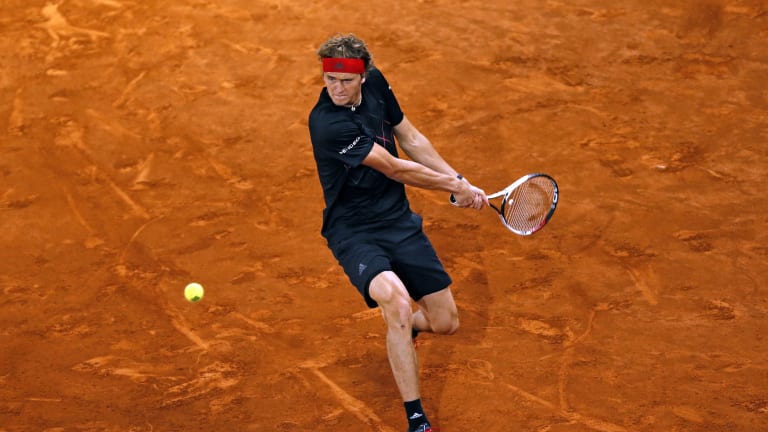Zverev, however, will not be cast aside easily by either veteran icon. The German has demonstrably proven he can play on any surface. The view here is that Zverev is at his very best on hard courts, but he may be only marginally superior on that surface than he is on clay. Twice he has been to the final of Halle on grass. He is a versatile player who has the patience to succeed on clay, the power to thrive on hard courts and the agility and athleticism to be a force on grass.
Above all else, he must be regarded now as one of the best three of four servers in the sport—one of the chief reasons why he has moved up very close to the top of the tennis ladder. On top of that, his backhand just might be the finest of them all. His two-hander is almost technically impeccable, and no one flattens out a crosscourt backhand and accelerates the pace better than this man with the sweet timing. The serve and the backhand have made him who he is—a great champion in the making with the right mindset and the skills to get him just about anywhere he wants to go.
And yet, proximity to the top, and actually establishing preeminence, are two distinctly different things. The key for Zverev will be rectifying his disappointing record thus far at the four Grand Slam tournaments. In fairness, he has played only eleven Slams, and has yet to advance beyond the fourth round.
Zverev is better than that, and he knows it. But we too easily forget that this arresting player just turned 21 last month. He needs time to grow into his talent, to wed his shotmaking skills with his match-playing propensity, to figure out what it takes to win on days when things are not going his way. In some cases, he has probably been excessively driven to succeed, and that has led to preventable failures. For example, how could he win only five points in the fifth set of his clash with Chung this year at the Australian Open? That is inexplicable.
Be that as it may, Zverev is a consummate professional. He knows that the pace setters, Federer and Nadal, were simply good for everyone else in 2017, dividing the four majors between them. He realizes that he was not ready until the US Open last year to consider himself a viable candidate to win a Grand Slam event. His outlook now has surely been sweepingly altered. Elite players often make serious progress in their early twenties, or sometimes sooner. That is when they often start collecting prominent trophies.
Pete Sampras got on the board at the US Open in 1990 when he was only 19, becoming the youngest man ever to prevail in that major. Nadal was only 19 when he took his first French Open title in 2005. Federer was still 21 when he won his first of the premier prizes at Wimbledon in 2003. Zverev surely wants to garner a big one soon, preferably this year.
I believe he will win either Wimbledon or the US Open this year, more likely the latter. I can’t envision him not concluding 2018 among the ATP Top 3. Federer is understandably concerned with the preservation of his body as he approaches the age of 37. He will not overplay over the second half of this year, nor will the equally sensible Nadal. Del Potro is picking his spots carefully to avoid wrist issues.
Zverev will need to reach the latter stages of the three upcoming majors to keep himself in the hunt for supremacy. He has to avoid some of the mood swings that have hindered him periodically. A realistic goal is three or four more tournaments between now and the end of his season.
At the very least, Zverev will be a strong contender for No. 1. Perhaps he even will be standing alone at the top when the curtain closes on the 2018 campaign.

